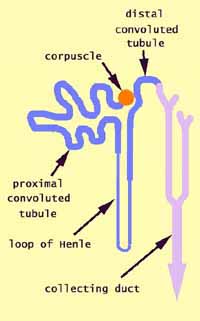(Pop-up help sessions are invited.)
Intro to basics of histology (short essays with more links)
Kidney study guide (Bullet points below are links to topics within this study guide.)
- Kidney as gland. The kidney has the fundmental architecture of a
gland, with branching ducts terminating in specialized secretory structures. But under
the microscope kidney and gland have markedly different appearances. The kidney has glomeruli
in place of glandular acini, and ducts occupy most of its bulk.
- Cortex / medulla. The consistent spatial arrangement of
glomeruli and tubules yields distinctly appearances for cortex and medulla. (This cartoon nephron is not drawn to scale;
a human kidney contains hundreds of thousands of nephrons.
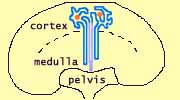
medulla cortex 
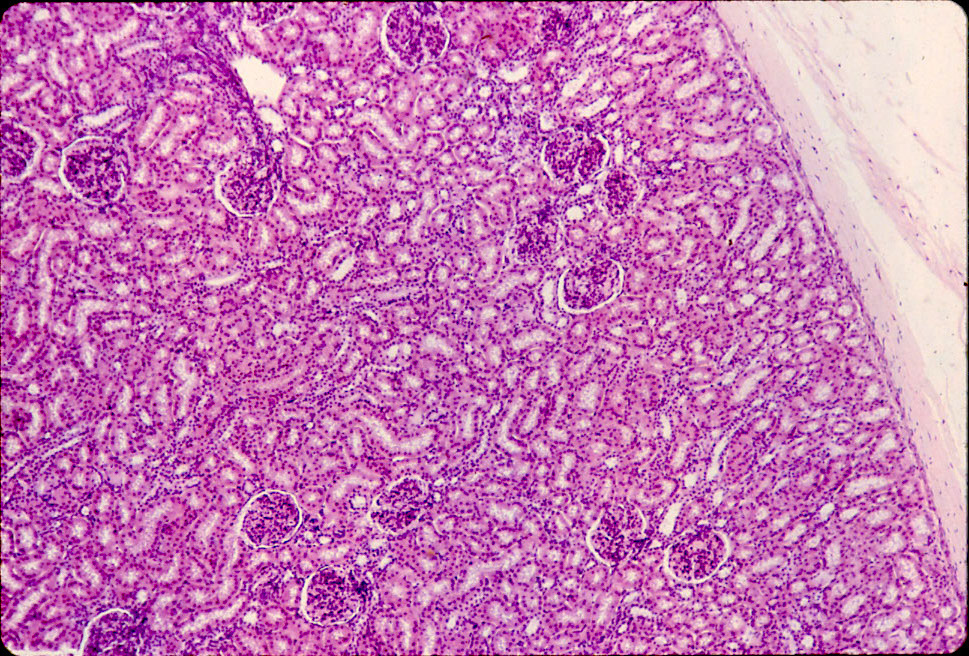
- The nephron. One glomerulus along with its associated tubule constitutes one "nephron." Each portion of the nephron has its own specialized function.
- Renal corpuscle. Each component of a glomerulus is significant for normal renal function. Recognizing each cell type visually is not as important as appreciating how all of these components work together and how departures from normal can interfere with that function.
- Fenestrated capillary endothelium, filtration membrane, and podocytes: These elements of the glomerulus are responsible for ultrafiltration of blood plasma.
- Mesangial cells and matrix Mesangial cells secrete the mesangial matrix (blue-black in these images), which helps support the glomerulus. The images here show a pathological increase in the number of mesangial cells and the amount of matrix.
- Tubules Renal tubules are differentiated into several specialized segments. Recognizing each segment visually is not as important as appreciating its function.
- Vasculature In the kidney, the arrangement of blood vessels has special functional significance.
- Pathology Many pathological processes not only interfere with renal function but also cause diagnostic changes in histological appearance.
- Pathology quiz
| gland | kidney |
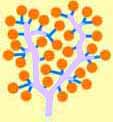 |  |
| gland (pancreas) | kidney (cortex) |
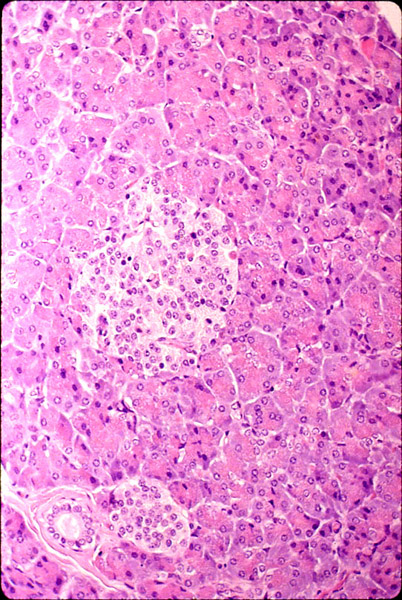 |  |
| gland (parotid) | kidney (cortex) |
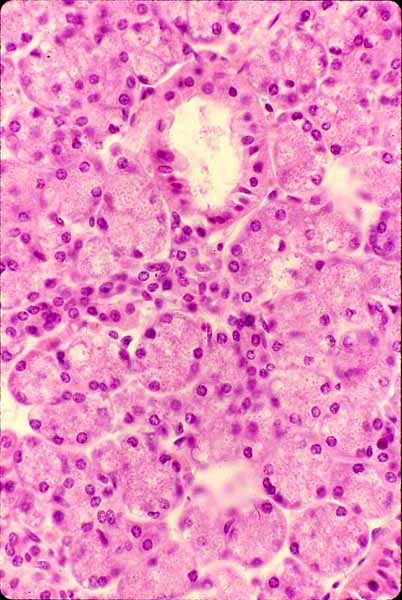 | 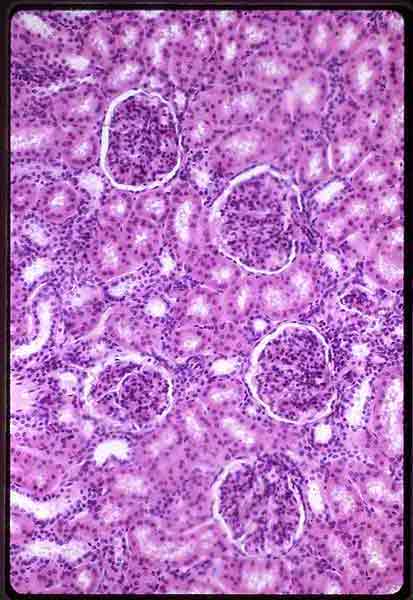 |
 |
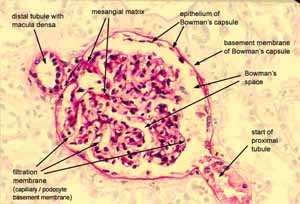 |
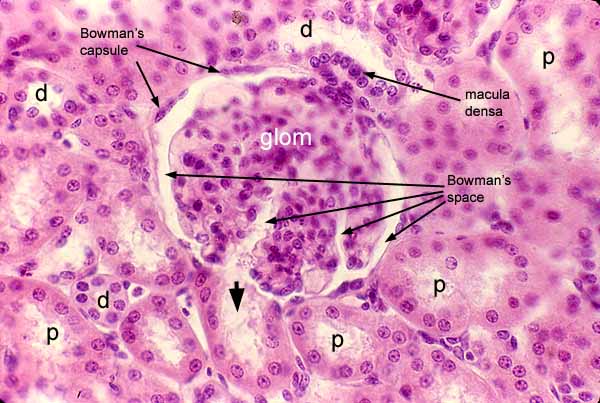 |
 |
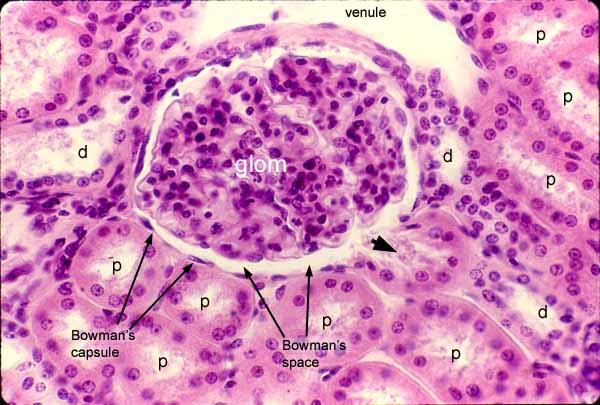 |
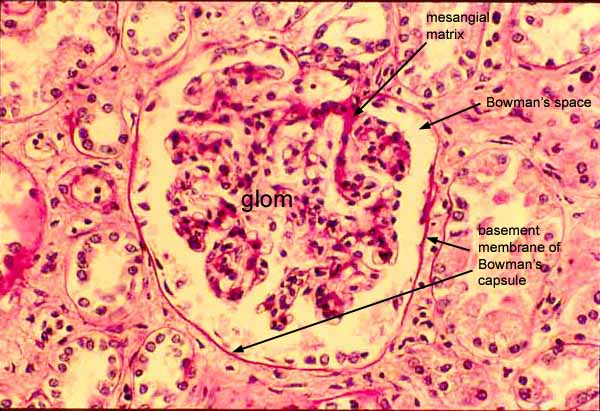 |
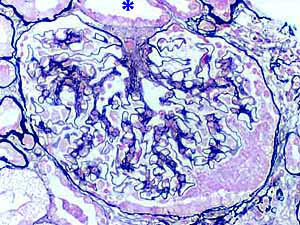 |
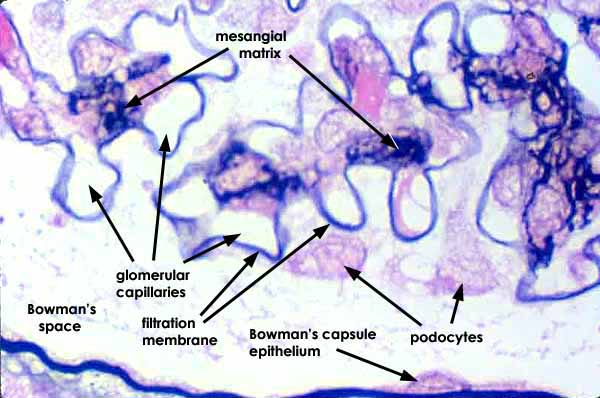 |
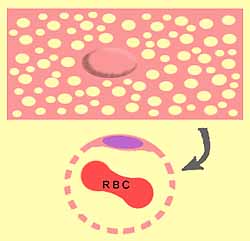 |
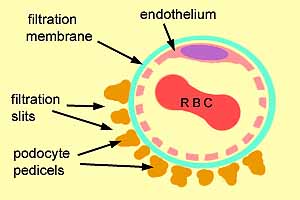 |
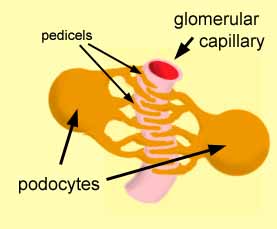 |
 |
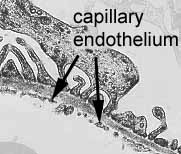 |
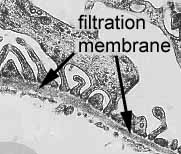 |
 |
 |
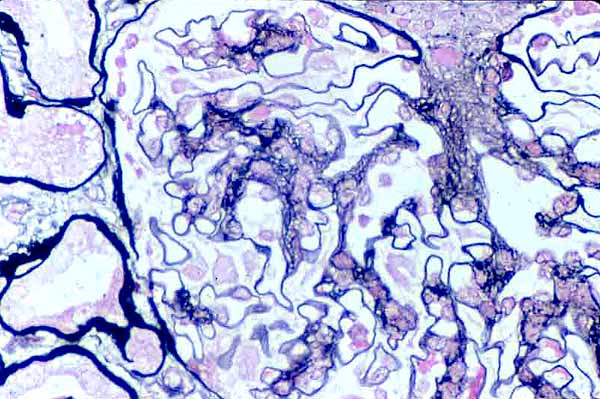 |
 |
 |
 |
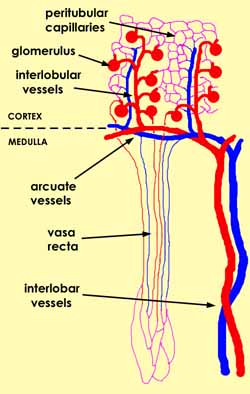 |
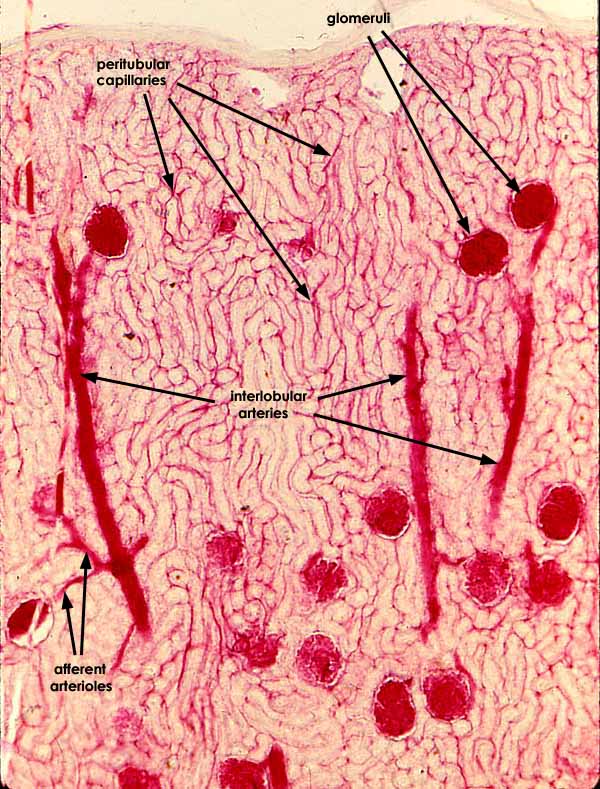 |
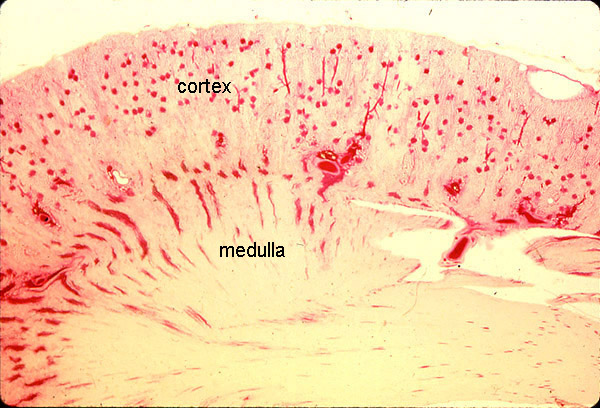 |
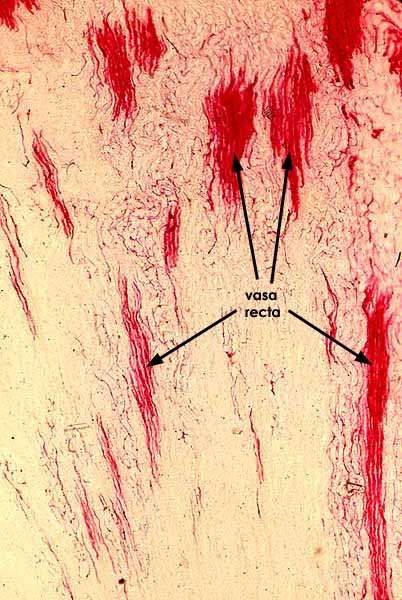 |
 |
 |
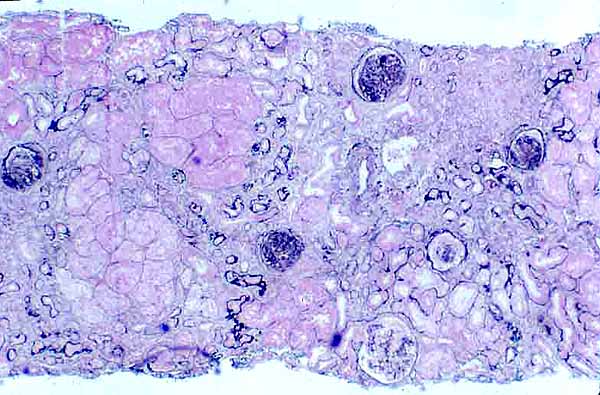 |
- Contents for traditional curriculum
- Image index for this website
- If you have a taste for history, see Eponyms in histology.
SEARCH THE SITE:

Comments and questions: dgking@siu.edu
SIUC / School
of Medicine / Anatomy / David
King
https://histology.siu.edu//LincolnScholarsProgram/Oct27.htm
Last updated: 30 October 2022 / dgk

